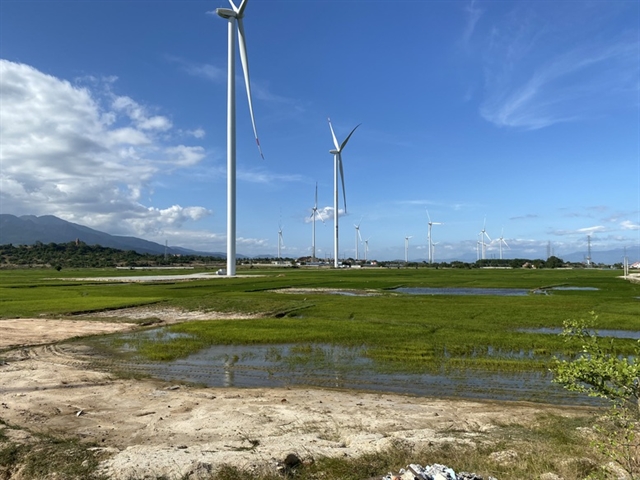The 2025 electricity price framework for offshore wind power sets regional ceiling rates, with the highest in the northern region at VNĐ3,975.1 (US$0.15) per kWh, not including value-added tax.

HÀ NỘI — The Ministry of Industry and Trade has approved the 2025 electricity price framework for offshore wind power, setting regional ceiling rates. The highest rate is in the northern region at VNĐ3,975.1 (US$0.15) per kWh, not including value-added tax.
The ceiling rate for the south-central region is VNĐ3,078.9 per kWh, while the southern region's rate is VNĐ3,868.5 per kWh.
These rates match those from an earlier proposal by Việt Nam Electricity (EVN).
EVN said the proposed prices were based on investment cost estimates, with average capital expenditure for offshore wind power plants across regions calculated at VNĐ93.6 million per kW, or VNĐ93 billion per MW, using an exchange rate of VNĐ25,450 per US dollar.
However, capacity factors vary by region, with the north estimated at 38.4 per cent, the south-central region at 49.6 per cent and the south at 39.5 per cent.
EVN also noted that no official feasibility studies have been conducted for offshore wind projects in Việt Nam. Preliminary calculations were based on input parameters developed by the Institute of Energy, drawing on figures from the Việt Nam-Denmark Offshore Wind Technology Handbook.
Although Việt Nam has no prior experience with this type of power generation, the country has set an ambitious target of reaching 6,000MW of offshore wind capacity within the next five years to help ensure national energy security.
Copenhagen Infrastructure Partners representative Stuart Livesey said that to meet the adjusted roadmap under Power Development Plan VIII, Việt Nam must adopt a comprehensive approach to offshore wind development.
He stressed that establishing a clear and consistent legal framework is the first and most urgent step, as it provides long-term stability for investors and developers, mitigates risks and supports informed decision-making.
The second priority is upgrading transmission infrastructure, seaports and the domestic supply chain to handle large-scale offshore wind projects.
Encouraging the participation of local businesses through workforce training and preferential policies for local manufacturing will also be critical to enhancing economic efficiency and sustainable development.
Lastly, improving access to reasonably priced financing through international cooperation and transparent bidding mechanisms will be key to unlocking the sector’s potential. VNS





